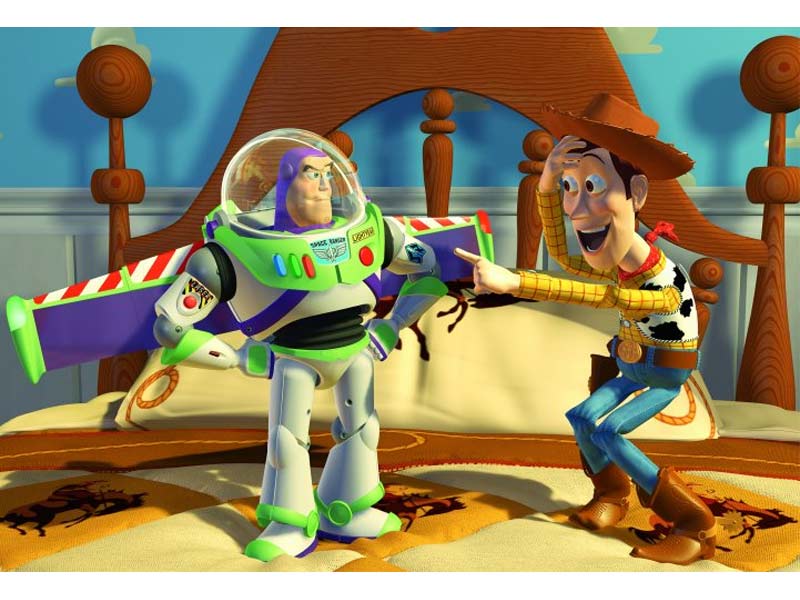The one that started it all.
Out of all the animation studios, Disney, unsurprisingly, has the greatest potential of making some of the best CGI films. The question remains, however, if they well. Many of Disney's earlier computer animated films were mediocre at best (Meet the Robinsons, Bolt) or just horrible (Chicken Little). Disney seems to have been improving drastically lately, releasing films such as Tangled and Wreck it Ralph. This gives many people mixed feelings though, as they contemplate what will happen to hand drawn Disney films in the future.
Disney you have regained my faith.
Dreamworks, Pixar's biggest competitor, has made a few memorable films such as Shrek and How to Train Your Dragon (so far their best). While most of Dreamworks' films are high grossing, the quality of their films can be somewhat variable. This is because Dreamworks tends to make films that focus more on humor and satire than the more plot oriented Pixar films. In fact, Shrek is basically just about making fun of every Disney fairytale cliche. It was giving the finger to Michael Eisner, who was the basis of Lord Farquaad. (That was pretty funny though.) Some of Dreamworks' films are just downright atrocious (Sharktale, Bee Movie) and they have a reputation of milling out lots of sequels (Shrek, Madagascar, Kung Fu Panda).
Blue Sky, Sony, and Illumination Entertainment tend to produce middle of the road movies at best and tend to emulate Dreamworks' style (make lots of sequels and have fast-paced humor). Blue Sky's Ice Age films tend to earn lots of dough, but probably won't stand the test of time. Sony's films are often so generic it is easy to believe that they come out of another studio (Surf's Up, Open Season). Although, they seem to have been somewhat improving lately. Illumination Entertainment has lots of fans due to Despicable Me, but the studio is also responsible for that horrible CGI-live action hybrid Hop (A rabbit that poops jellybeans, seriously?) and a rather disappointing adaptation of Dr. Seuss's The Lorax.
Recently there has been a growing sector of photorealistic or 'motion-capture' animated films. Fueled by the technology used to bring Golem to life in the Lord of the Rings, Warner Brothers,Paramount, Square Enix and Imagemovers have made a wide variety of these films with varying quality. The Polar Express and Tintin: The Secret of the Unicorn were fairly enjoyable. But other films have had a harder time avoiding the uncanny valley or suffer from terrible, cliche plots (Happy Feet, Mars Needs Moms, and Final Fantasty: The Spirits Within). Motion-capture remains controversial because many animators debate whether or not these films can truly be considered animated due to the fact motion capture is used to trace/animate over the movements of real people. (This is similar to the debate over the use of the rotoscope.)
Luckily they are getting better.
Smaller Studios tend to have a harder time producing quality films because they have to conform to using tired plot formulas in order to appeal to target childern audiences and keep media watchdogs happy. Because they have less money, the animation itself is cheaper and can look very unappealing. This is the reason why many TV series and foreign films tend to prefer using traditional animation. It's cheaper and cheap traditional animation looks better than cheap CGI. Just compare Barnyard to Huckle Berry Hound or Roadside Romeo to Kimba the White Lion.
A Male Cow with Udders?!
Simplistic, yet appealing.
This picture is wrong in so many ways.
Limited animation, but it works!












No comments:
Post a Comment